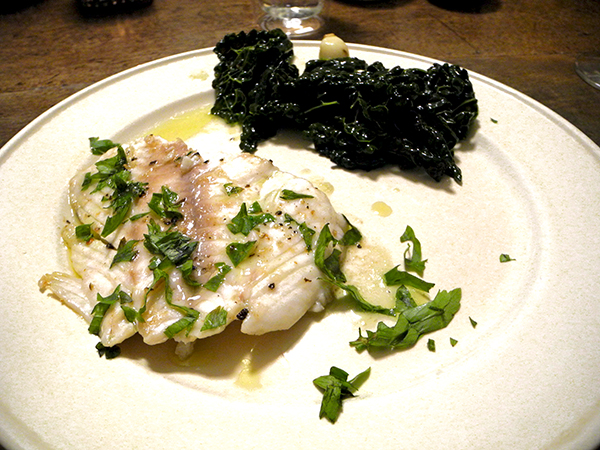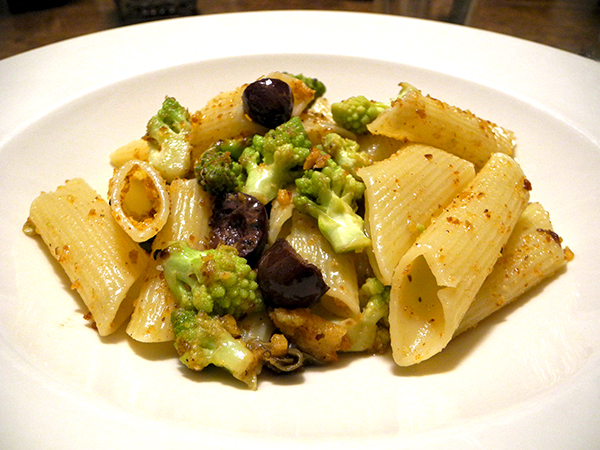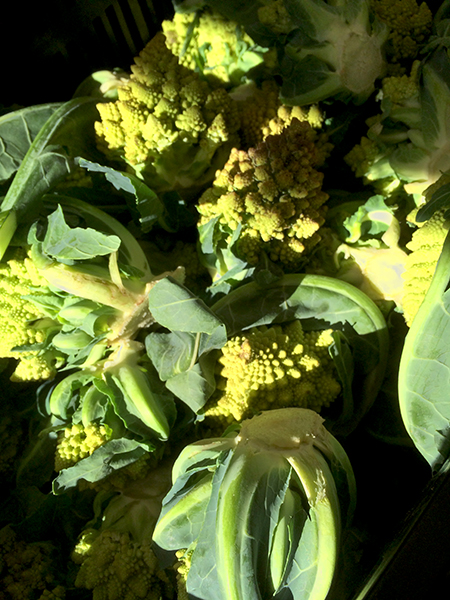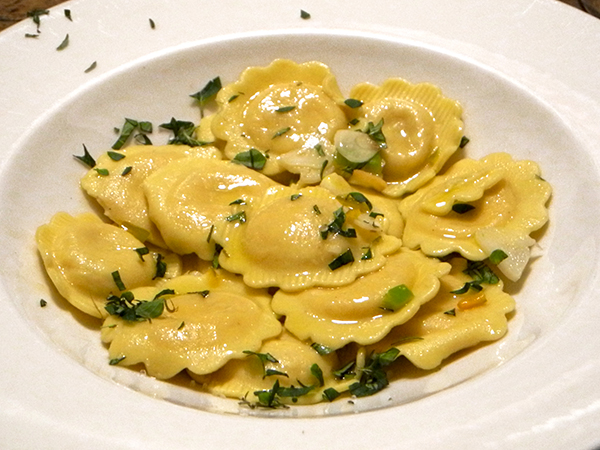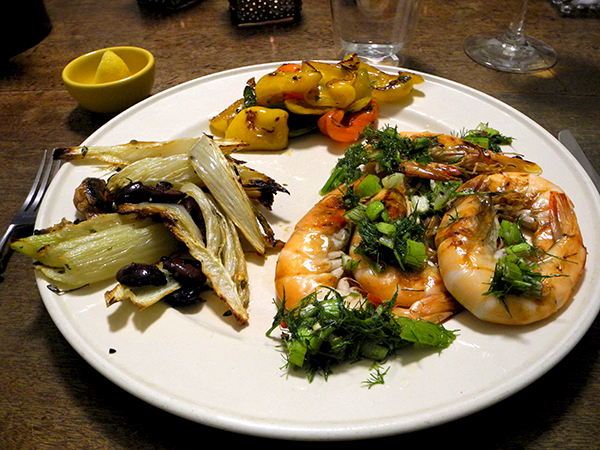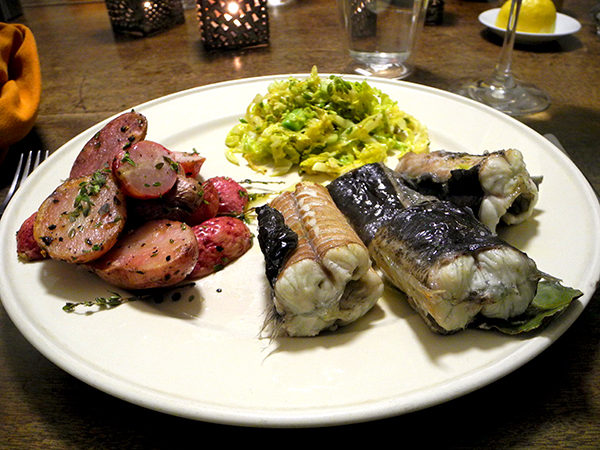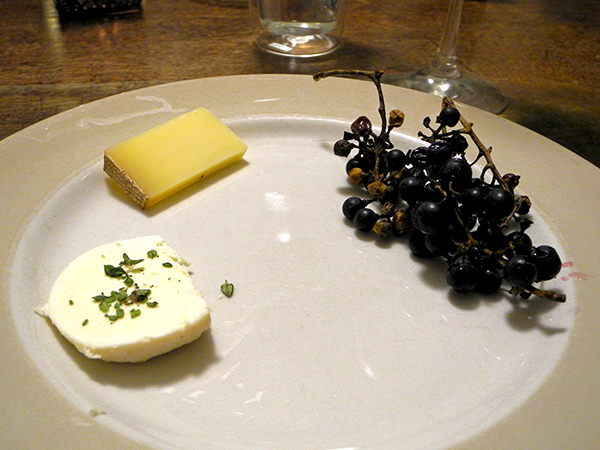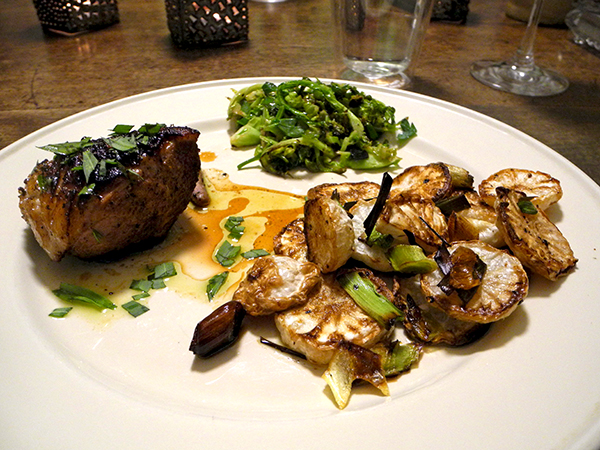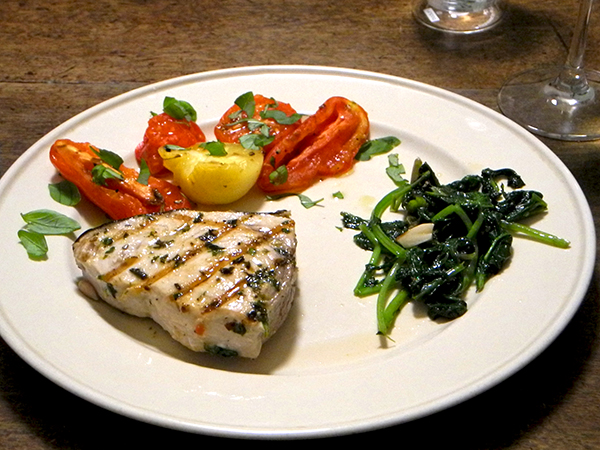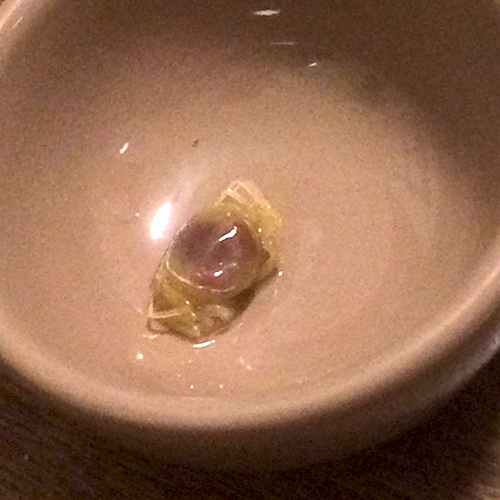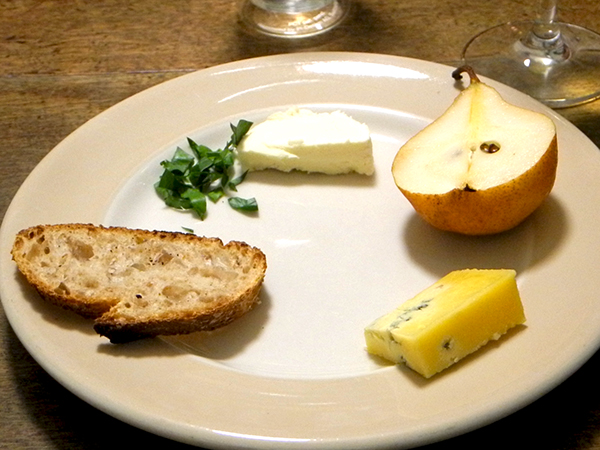Nice picture.
This was also just about a perfect meal, for the cook and the diner, but to be totally honest, I have to quickly add that it gets that salute only by the standards and means of a modest kitchen and a quite-ordinary competence.
Also, it was the child of necessity, or more exactly, the happy outcome of a glitch in plans which is not unusual. On my trip to the Greenmarket on Friday I was disappointed once again in not finding John Dory fillets (they had sold out much earlier). I’ve become accustomed to the need for adjusting to whatever might be available in the fish stalls (or those of any other venders) at the time I arrive, which is often well past the hour when the most [exciting?] fish may have been scooped up by its fans.
When I stopped by Pura Vida Fisheries this Friday at about 1:30 in the afternoon, Paul suggested triggerfish fillet. I don’t think I had ever eaten it before, and I’m certain I hadn’t cooked it. Apparently even the Grey triggerfish is somewhat rare this far north. Perhaps because its habitat is along rocks along the shore, where it dines on shellfish (yum!), it’s not really fished commercially, but this is the time of year it’s most likely to be found, usually by anglers.
But then we both noticed that there were only two left inside the pan resting on the the ice, and they turned out to weigh only about 8 ounces altogether. I decided that wasn’t quite enough for the two of us at dinner, so I added 6 large sea scallops to my ‘catch’, and added it to the fillets already on ice inside my insulated bag. I would sort out the menu later.
The meal I assembled, of two courses, each featuring some great seafood, was otherwise very minimal in both outline and execution, allowing the quality of some very fresh ingredients to star without any distractions.
There was another first last night: I used my new [previously-owned] tin-lined copper au gratin pan for the very first time, employing it here to sauté the Triggerfish fillets. I have never cooked with copper pans, and I didn’t buy it for display (I leave that to the seasoned-polished cast iron). I loved the copper thing, finding it, at least in this outing, most remarkable for the speed with which it heated.
- six sea scallops from Pura Vida Fisheries, rinsed, dried, slit almost all of the way through horizontally, where they were stuffed with a mixture of 6 leaves of Gotham Greens Rooftop packaged basil from Whole Foods, one medium-size clove of garlic from Norwich Meadows Farm, salt, and pepper, all of which was chopped together very finely before enough olive oil to form a paste was added, the stuffed scallops then rolled around on a plate with a little more olive oil, pan grilled about 2 minutes on each side, removed to plates, lemon juice and olive oil drizzled over the top
- eight very ripe, very sweet cherry tomatoes from Stokes Farm, washed, dried, halved, heated for a minute in a small, low, ancient Pyrex bluish-glass pan, seasoned with salt and pepper, added to the plates with the scallops
While Scallops are a familiar presence on our table, the Grey Triggerfish doesn’t even make it to our fisher-owned market stands very often, but now I know that it’s a great treat when it does. I wrote above that this fish hangs out around rocks, and so, in addition to a great texture unlike anything else I can think of, it has an attractive, quite subtle, rather sweet taste, with a finish suggesting crustaceans. It does indeed. Lovely.
Because it involved no elaborate preparation, the second seafood course followed the first with a minimum of delay. Nice.
I ended up inventing a recipe for the Triggerfish myself, because I had found nothing useful in any of my cookbooks, in my files, or anywhere on line.
- two 4-ounce fillets of Triggerfish from Pura Vida Fisheries, rinsed, dried, seasoned with salt and freshly-ground black pepper, sautéed in olive oil over medium-high heat for only about 90 seconds on each side, removed to warm plates, drizzled with a little fresh lemon, sprinkled with chopped lovage from from Tamarack Farm and drizzled also with olive oil and/or the oil remaining in [yes, here the tin-lined copper!] pan
- the most delicious, juiciest cavalo nero, or lacinato kale, that I’ve ever tasted, from Tamarack Farm, braised with olive oil and one split clove of garlic from Norwich Meadows Farm, which had previously been barely colored in the oil
- the wine was a Spanish (Vallalodid) white, Vevi Rueda 2014
- the music was the entirety of ‘Barbary Coast‘, Red Light New Music’s wonderful first album

